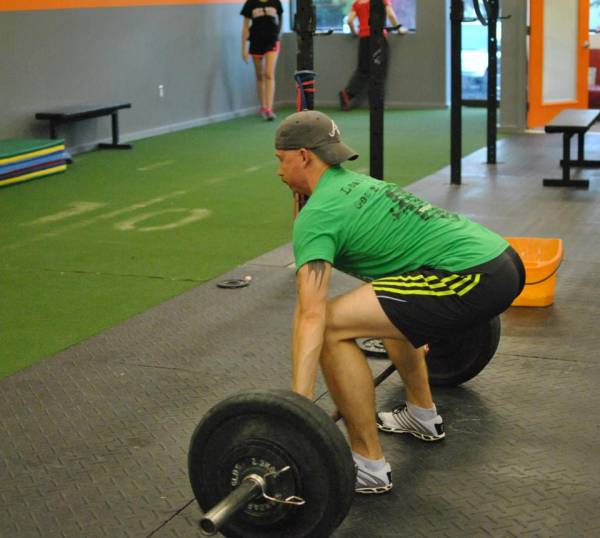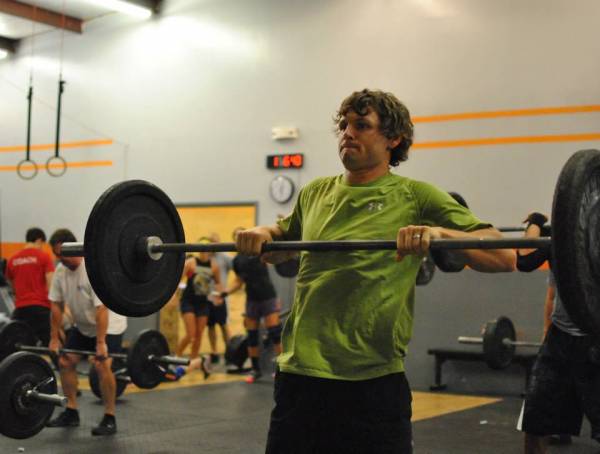There are a lot of sources for beginning weightlifting training information available these days. So much so that it is understandable that newcomers are overwhelmed and befuddled as to which instruction or information source to follow. The purpose in my writing this article is to provide some helpful direction to the novice coach who might be perplexed.
Starting Point
If the goal is to become a proficient weightlifter, the first and most obvious thing to do is to determine the starting point, and this can best be done through the honest assessment of a competent coach. Everyone who begins to train for the sport of weightlifting is imbalanced for proper performance and training to some degree. Only those lifters who are well on the pathway to reaching their true potential can consider themselves balanced.
If you have been a serious lifestyle wrestler, then your body is balanced to compete at wrestling. I’m not just referring to the balance of your muscular development, but also the development of your nervous system and the capacity of the various vegetative organs to function efficiently enough to achieve or maintain homeostasis. These tissues and organs and their functions are also trainable, and as such they must be addressed in the early and intermediate development stages of a weightlifter.
The most obvious imbalances are in the area of muscular anatomy, but there are also motor pathways and movement patterns that need to be addressed. Many beginners have mobility issues, and most are just at the beginning stages of developing training and restoration capacities. The most significantly deficient factors must be given some priority in the early training process. Furthermore, the psychological development must also be balanced with physical progress.
Mastering Technique Is Important, But…
Currently there appears to be an abundance of trainers and coaches (call them what you will) willing to charge people to teach them technique. Some of these instructors have a little experience, while others have done little more than passed a weekend USAW Level 1 course or some other course that is even less comprehensive.
By the way, taking and passing a coaching course doesn’t make you a competent entry-level weightlifting coach. You need to take that information and coach a couple dozen athletes up to the point where they can enter competition and not embarrass themselves and you. If you can’t tell if you were embarrassed, then you’re still very much a coaching work in progress. Moreover, if you haven’t competed in a meet yourself you have no idea how your body feels during the course of executing a competitive lift. This will make it difficult, if not impossible, to explain these sensory inputs to your athletes.
 Getting back to the learning of technique. Only a part of the very early training can be devoted to the learning of technique since there is a neural fatigue issue involved. Technique training should commence at the beginning of the session, and then when the sharpness of execution begins to fade, the focus of the session should shift to remediation. The worst and most persistent issue should be addressed first and the rest following in a hierarchy of difficulty, from worst to least intrusive.
Getting back to the learning of technique. Only a part of the very early training can be devoted to the learning of technique since there is a neural fatigue issue involved. Technique training should commence at the beginning of the session, and then when the sharpness of execution begins to fade, the focus of the session should shift to remediation. The worst and most persistent issue should be addressed first and the rest following in a hierarchy of difficulty, from worst to least intrusive.
Diagnostic Assessment
Before you, as a coach, begin working with a newcomer, some diagnostic assessment is helpful. Pass throughs, overhead squats, front squats, and lunges are helpful diagnostic tools to determine areas in need of mobility remediation. Vertical jumps, sprints, and pull ups are further good indicators of motor abilities and physical strength. The actual rates at which a newcomer acquires skills and performs movements are also good indicators of motor learning abilities.
You should make a list, mentally if not actually, and then try to develop a strategy for each training session. As an athlete makes progress, the order of the strategy will have to change, as may the exercises employed to balance the development. At this point you should also develop in your mind a vision of how your athlete will perform in a few weeks, so you have that as a goal.
Determining Progress
 You must be constantly aware of events that indicate improvement. Footwork may become more precise. Shoulder mobility might improve. The speed of movement with a given weight may improve. Some issues may improve rapidly, while others may take considerably longer. As each issue improves, the emphasis it is given in the training design must be modified. Balancing means working with a moving target. At each step in the process your athlete should be getting closer to achieving the vision that you set forth during the diagnostic assessment.
You must be constantly aware of events that indicate improvement. Footwork may become more precise. Shoulder mobility might improve. The speed of movement with a given weight may improve. Some issues may improve rapidly, while others may take considerably longer. As each issue improves, the emphasis it is given in the training design must be modified. Balancing means working with a moving target. At each step in the process your athlete should be getting closer to achieving the vision that you set forth during the diagnostic assessment.
And So…
The first time that you work through this process may take a long time because it is the first time. After you do it several times, you will become more adept as your perceptions become heightened. You can see errors more quickly and you can develop strategies for dealing with them. All of this becomes part of your toolkit as a coach, and the individual components are not easily, nor quickly acquired. Once you have developed your athlete to the point where much of the balancing has been completed, you are then ready to proceed on to the next phase, which is performance improvement.
Photos courtesy of CrossFit Impulse.






